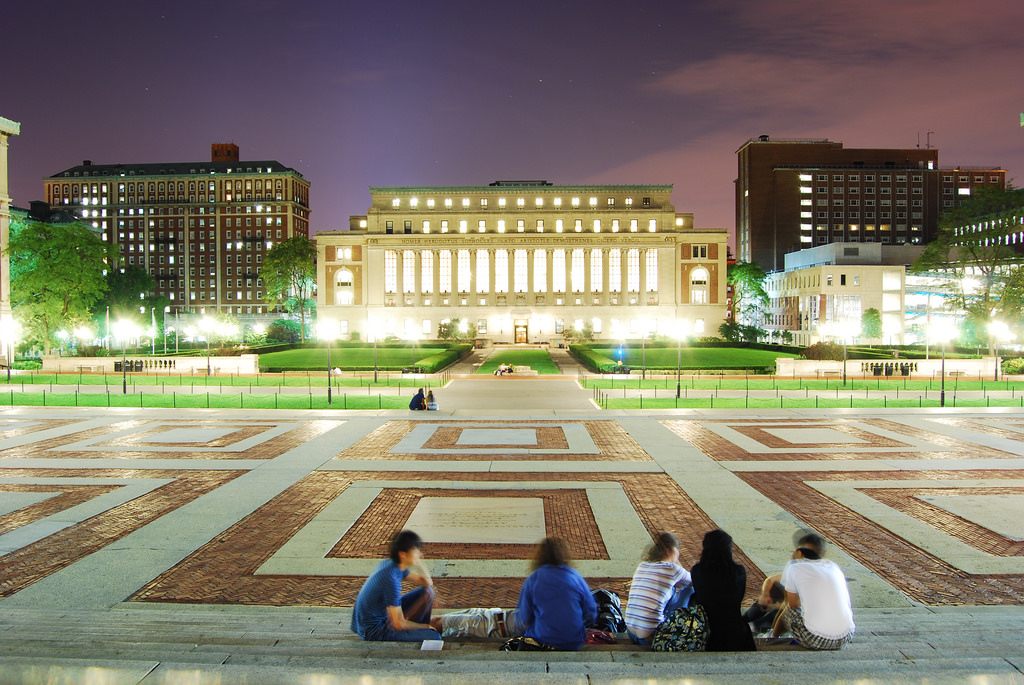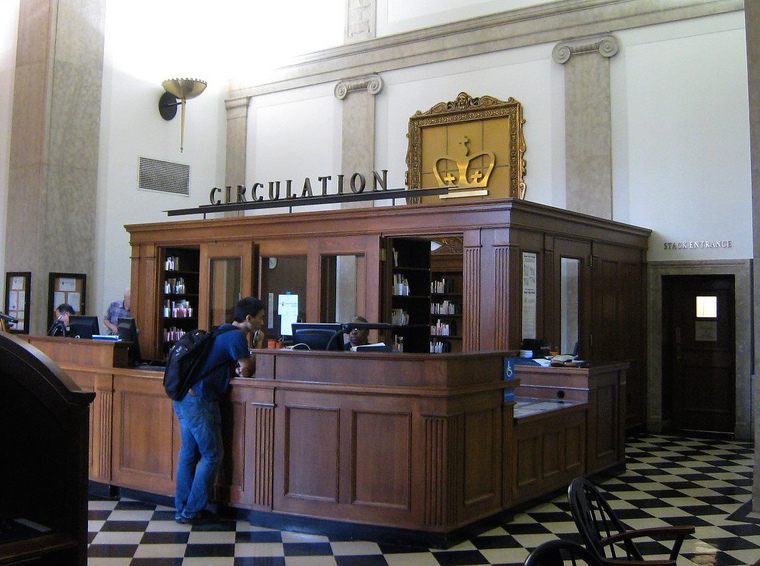The Strange Affliction of ‘Library Anxiety’ and What Librarians Do to Help
It’s a real phenomenon, and Ivy League librarians are fighting it.

Don’t be afraid. (Photo: timetrax23/CC BY-SA 2.0)
In a few short weeks, bright-eyed college freshmen will be ambling onto campuses and into their first lectures. Which means a whole lot of newly minted undergrads are about to get freaked out by their on-campus libraries.
Library anxiety is real. The phenomenon, which involves feeling intimidated, embarrassed, and overwhelmed by libraries and librarians, was first identified by Constance A. Mellon in 1986. Her paper, “Library Anxiety: A Grounded Theory and Its Development,” reported that college students in particular are prone to library anxiety because they believe their research skills are inadequate, which makes them feel ashamed and unwilling to talk to the very librarians who might be able to ease their worries.
Some students in Mellon’s study did their best to avoid the library altogether. “I know that nothing in here will hurt me,” wrote one freshman, “but it all seems so vast and overpowering.” Another first-year student described the library as ”a huge monster that gulps you up after you enter it.”
Though it’s been 30 years since library anxiety was identified, the fears are still present among college students. This presents a problem for libraries, especially as the increasing availability of digital resources from home has contributed to the image of libraries as fusty, inaccessible warehouses.

The Library of Columbia University is not the library of Columbia University. (Photo: Alex Proimos/CC BY 2.0)
In 2016, students are used to just using the internet at home, says Anice Mills, who has been a librarian at New York’s Columbia University for 15 years. But that doesn’t really work for academia. “As soon as you need to use scholarly resources, Wikipedia isn’t going to cut it,” she says. That’s when students make their first trek to the campus library, where, says Mills, many feel “overwhelmed, intimidated, and embarrassed.”
A major contributor to students’ anxiety is in the design and architecture of the buildings. “It’s such a change from most high schools,” she says. “Columbia has 20 libraries, and they’re divided up by subject. That’s not obvious—you wouldn’t know that when you walk in, there’s no sign to tell you that.”
When there are signs, they can be misleading. For example, the stately building with ”The Library of Columbia University” carved on its facade is not, in fact, the library of Columbia University. Well, not anymore—the Low Memorial Library, as it was dubbed when built in the 1860s, quickly proved too small to house the required information resources, and has been used as an administration building ever since. Confusion like this, says Mills, “adds a lot, at Columbia, to the general sense of ‘Oh my God, how am I ever going to figure this place out?’”

Columbia’s lit-up Butler Library looms in the background. (Photo: Beraldo Leal/CC BY 2.0)
Even when students end up at the right place—for most, Butler Library, Columbia’s main source of research resources—it’s a “fairly intimidating.” Butler’s grand facade, built in the 1930s, is inscribed with the names of ancient Greek writers and philosophers (Herodotus, Sophocles, Plato, Aristotle) above the formidable columns that flank that main entrance. “You walk in and you’re in a large domed lobby, not a book in sight,” says Mills. “There’s no people, there’s no one to ask, there’s no signage. You have to figure it out on your own—where are the books?”
Though Butler Library underwent extensive renovations in the early 2000s, it remained confusing. “The architect who designed the renovation did not want to put signage up in the lobby that said ‘This is where you go for this,’” says Mills. “He thought that would be too much like an airport.”
Once students make it past the lobby, it can be hard to locate a librarian. “The librarians are behind desks, they’re in offices,” says Mills. To counteract the confusion and make students feel more welcome, she wears a Columbia lanyard, walks around the library, and introduces herself using her first name. “I try to be as accessible and empathetic as possible.”
While library anxiety is most pronounced in first-year undergrads, students in graduate programs can also feel intimidated by the research process. Some students in masters programs, says Allen Foresta, Senior Librarian at Columbia University’s graduate Teachers College, “managed to get through undergraduate without really being required to use a library, which is kind of astonishing to me.” These students may need as much guidance as undergrads, especially if their previous studies have been more practical rather than research-based.
“To be a librarian it’s a whole psychological effort to try to understand, when someone comes to speak to you, what are they bringing with them?” says Mills, citing international students and older students as two groups who feel especially ill at ease in the library. “What kind of background or anxiety are they bringing with them when they sit down to talk to you?” Mills and Foresta visit classes to encourage students to ask librarians for assistance, and also work one-on-one with students to help them get the hang of research methods and databases.

Butler Library’s Circulation Desk. (Photo: Karen Green/CC BY-SA 2.0)
At Teachers College, the latest feature aimed at making the library more accessible is a “Learning Theater“—a black-box space that incorporates pivoting glass dividers, immersive projection, and wirelessly controlled theatrical lighting. According to the designers, the Theater will serve as a “dynamic prototyping lab for developing and testing new ways of teaching and learning.”
The dramatically lit learning lab is a far cry from the hidden stacks and shushing of the old-model academic library. It even takes some cues from New York’s avant-garde theater scene. As part of a “professional development activity,” Foresta and other Columbia library staff attended Sleep No More, an immersive and unsettling interpretation of Macbeth that takes places over six floors of a haunted hotel.
“The idea was to try to get a sense of how space and sound and imagery could be used in our space,” he says. “I think the thing that I liked most about it was the little bit of the scariness of it, the creepiness … Maybe it’s a good thing to kind of embrace the anxiety.”










Follow us on Twitter to get the latest on the world's hidden wonders.
Like us on Facebook to get the latest on the world's hidden wonders.
Follow us on Twitter Like us on Facebook